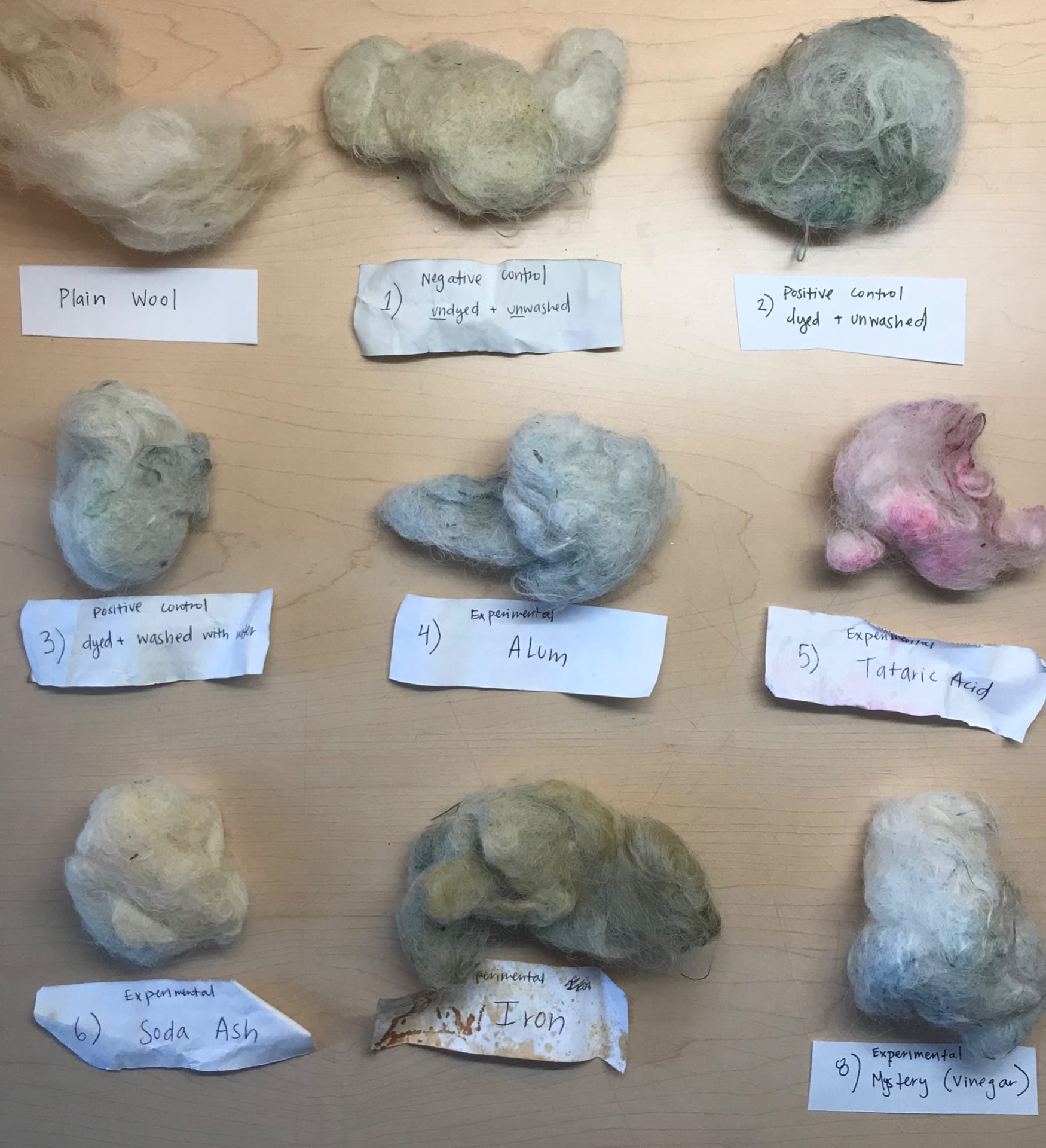For my dye lab, I decided to use purple potatoes because I was cooking a dish with them to make this soup and I noticed that the potatoes turned the soup a purple color so I thought it would be interesting to see if the potatoes could be turned into some kind of dye. In order to make the dye, I used 3 potatoes and a lot of water. At first I thought the potatoes weren’t going to be able to make a usable dye because there was too much water and when I placed the potato into the water, it wasn’t changing color.
In the first image, you can kind of see that the color from the potatoes is coming out a little and tinting the water but I was worried that not enough color would come out. During the process of letting the potatoes boil, I decided to break up the potatoes in the water with a spoon so that there was more surface area of the potato touching the water. In the second image, the dye is much lighter and at the point the potato is a sort of mash. Because the potato mash is quite dark, it is making the dye looking darker than it seems but after I strained out the solid potato, the dye was lighter.
After straining out the potato, I let the prepared wool and muslin pieces soak in the dye for about half an hour. But after half an hour, the dye seemed like it didn’t really soak in too well so I gave it another 10-15 minutes. Then I placed it into the mordants I prepared and let that sit for about 20-30 minutes.
This is the wool and dye right after they were placed into the mordants. As you can see, the dye was not very strong because the colors are very light. This is especially present in the top most left sample which is the materials soaking in water. The wool and muslin are a little gray in this one but it isn’t the purple I expected to come from the potatoes.
After letting the material sit in the mordants, these were the results. The second pot is what I expected all the purple dye to come out as but the other ones are drastically different. If I were to try this experiment again, I would definitely let everything sit in the dye and mordant mixtures for longer because then I think the effects would be stronger. Because in the next images, you will see what the final, results of the dye lab were.
This is an image of all the wool and muslin after they’ve been taken out of the mordants and have been set to dry.
These are the final results of the dye lab after drying. Here, the different colors can be seen but they are not as strong as they are when they were sitting in the mordants. I think it is interesting how the colors and differences are subtler but still present. Although the results didn’t turn out as expected, I think the subtly can be really beautiful and can result in interesting results if explored further. Out of all the samples, I think the 3rd (dyed and washed with water) and 5th (dyed and soaked in a tartaric acid mordant) turned out the best.
Here are the answers to the experiment reflection questions: dye lab trial questions-1qqp85v







